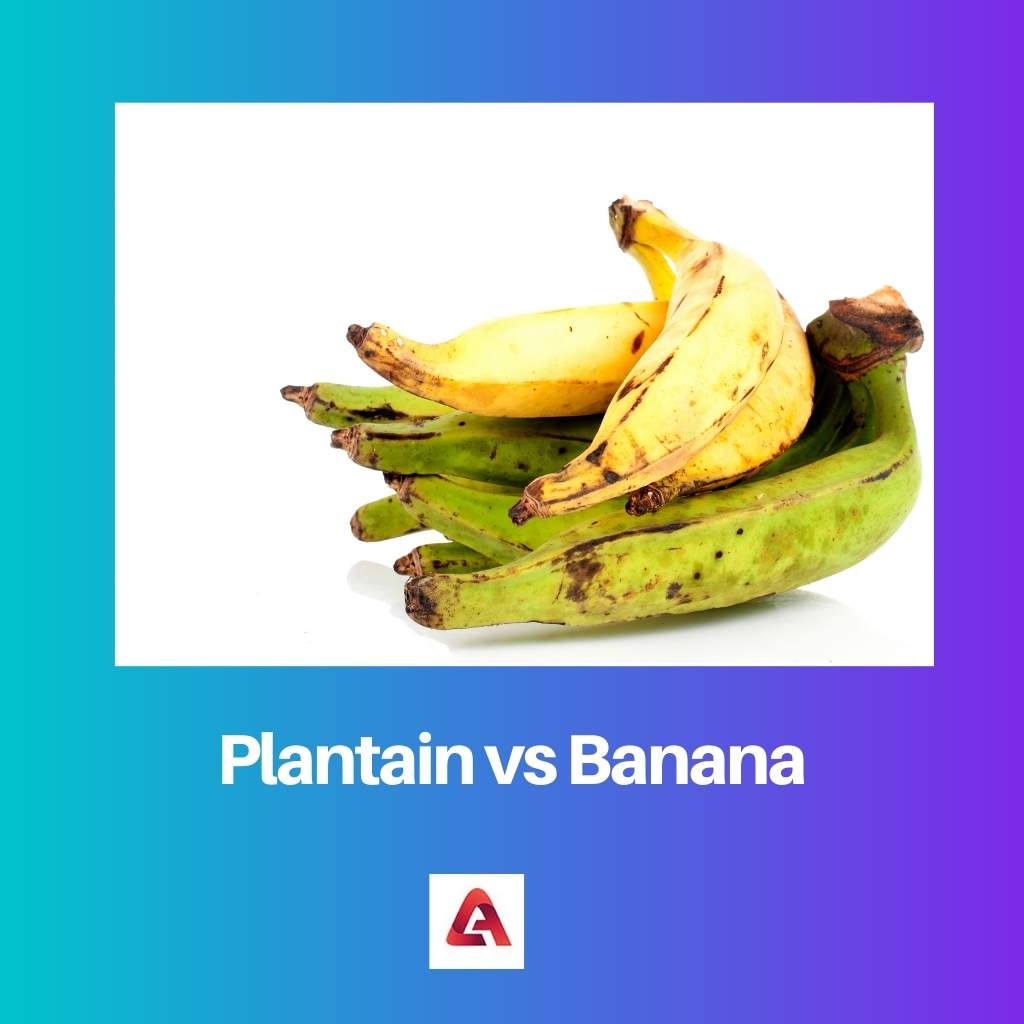Bananas and plantains are both classified through their botanical classification. Plus, apart from this, they both have something that is most common and obvious, which is their appearance.
Plantains and bananas are major sources of some vital nutrients like potassium, fibre, vitamin C, and many other antioxidant compounds like 2, 3, 4.
Key Takeaways
- Plantains are larger, starchier, and less sweet than bananas, with thicker skins.
- Bananas are eaten raw, while plantains are cooked before consumption.
- Plantains are a staple food in many tropical countries, while bananas are consumed globally as a fruit.
Plantain vs Banana
Plantains or green bananas are starchy fruits that are used for cooking. It is a staple in Latin, Caribbean and African cuisines. Bananas or dessert bananas are potassium-rich fruits that can be eaten raw. They are long, curved, and shaped with yellow skin.

Plantain is a term that refers to a different type of banana that just looks like it but has a different taste and culinary application, while banana is sweet and has a yellowish look, and most people are familiar with it.
They are most commonly used in the northern part of America and in European cuisine. But the interesting fact here is they are originally from the south-eastern part of Asia.
Comparison Table
| Parameters of Comparison | Plantain | Banana |
|---|---|---|
| Originate | Plantains originate from India, Egypt, Indonesia, and some tropical areas of America. | Bananas originate from the south-eastern part of Asia. |
| Cuisine | Plantains are most common in cuisines like Latin, Caribbean, and African | Bananas are eaten in North America and European cuisine. |
| Edible | Plantains are only edible when once cooked properly. | Unlike plantain, bananas can be eaten either raw or after cooked. |
| Appearance | Plantains look like bananas only. | Bananas look like long slender-shaped fruit with the yellow-colored outer skin. |
| Healthier | Plantains are healthier once they are cooked properly. | Bananas are healthier when they are eaten raw. |
What is Plantain?
As mentioned before, bananas have many different types, and plantains are one of them.
However, the fact about plantains is that they just look like bananas because of their botanical classification, but they taste nothing like it and have a very different culinary use.
Apart from the taste, what defines them is they are eaten once properly cooked as they can’t be enjoyed when eaten raw like bananas.

What is Banana?
Banana is one of the most common fruits eaten by most people around the world. It originates from the southeastern part of Asia.
The yellow appearance of the banana is a sign that it is ripped and ready to eat. When the skin is green and is quite difficult to peel, it means the banana is still unripe.

Main Differences Between Plantain and Banana
- Plantains look like bananas only, while Bananas themselves look like long, slender-shaped fruit with yellow-colored outer skin.
- They both are healthy in their own way as they are filled with multiple nutritional values, but Plantains are healthier once they are cooked properly, while Bananas are healthier when they are eaten raw.





